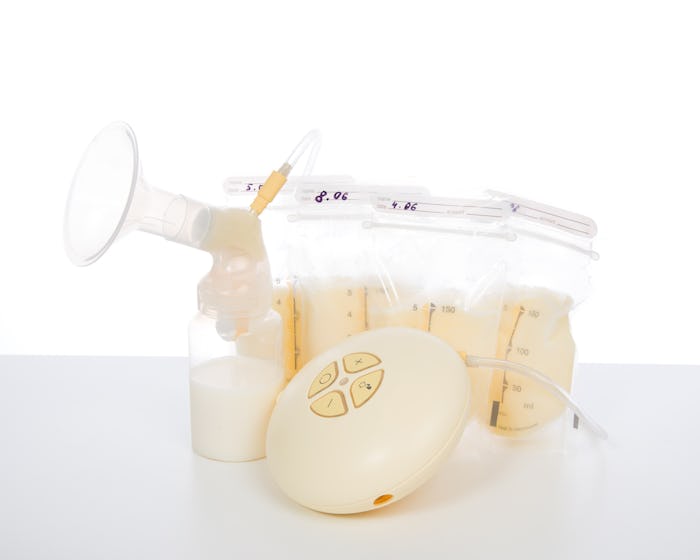Life

5 Power Pumping Myths To Ignore
If you're looking to increase your milk supply, chances are you've stumbled across many methods — each with varying levels of credibility. "Drink this tea to increase your supply." "Stop exercising and your supply will sky rocket." "Eat galactagogues for every meal, that's what worked for me." The advertisements and well-wishers are almost deafening, and it can be hard to sort through the myth and the fact. If the power pumping technique has come up in your quest, you might be hesitant about it's reliability to increase your supply. However, there are a few power pumping myths that are just as easy to believe, if you don't know the true facts about what power pumping is and what it accomplishes.
But before the myths are dispelled, it's important to know what is power pumping in the first place? Power pumping, according to Lansinoh, is a technique for using your breast pump that is meant to mimic the way a baby "cluster feeds," or nurses very frequently, during a growth spurt. When your baby cluster feeds, your supply is naturally increased via the supply and demand manner in which your body produces milk. The more milk that is removed, the more your body will replace.
Most guides, like Living With Low Milk Supply's comprehensive guide to power pumping, recommend pumping for an entire hour, for 10 to 20 minutes at a time. This, according to the site, will tell your body to produce more milk through stimulating the hormones that replace it.
Although the concept behind power pumping sounds logical, many are still skeptical that they can increase their supply with only diligent use of their breast pump. However, once these common myths are dispelled, you can see what power pumping really is: a tool that any mom can use to increase her supply.
Myt #1: Power Pumping Works Overnight
It's tempting to think (or hope) that you'll notice an immediate increase in supply. However, like any schedule change, your body will need time to adjust. According to Living With Low Milk Supply, it usually takes around three days to a week for most moms to notice an increase in milk supply.
Myth #2: Power Pumping Isn't Effective
Although it might not be the "quick and easy fix" that some moms hope it will be when it comes to increasing your supply, power pumping is effective if you practice it correctly and frequently. According to Pregnancy, Birth, and Beyond, power pumping is meant to mimic the way a baby cluster feeds during a growth spurt, and as long as you're doing it consistently and pumping correctly, you will see a difference.
Myth #3: Power Pumping Is Only For Moms Who Exclusively Pump
Power pumping is definitely a good option for exclusively pumping moms to increase their supply, but it can be for moms who nurse their babies too. You can add the hour long pumping session immediately after a nursing session (to continue to empty your breasts,) after bedtime, or during a nap, according to Lansinoh. Finding a time that works best for you is key.
Myth #4: Power Pumping Is Only For Moms With Low Supply
Although power pumping can be a very successful way for moms with a true low milk supply to notice an increase, it can be for any mom who simply wants to give her supply a boost. Whether you're hoping to pump a stock pile of milk for an upcoming trip, or just want to be able to feel confident about your supply, power pumping can be helpful for you.
Myth #5: Power Pumping Should Replace Your Regular Pumping Schedule
On the contrary, actually. According to Lansinoh, power pumping is meant to supplement your current pumping and nursing routine, not replace it. You should add power pumping sessions in between, or at the end of your already established routine, thereby tricking your body into making more milk by removing even more.